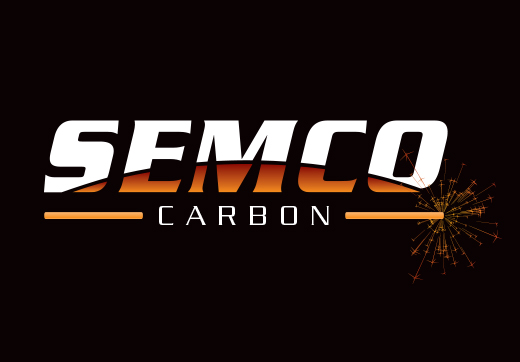
Graphite Density and Graphite Grade
Let's Talk Density of Graphite and Graphite Grades
Maybe we’re just a bit dense at Semco, but when the conversation at a party turns from politics or sports to things like graphite density or graphite grades (this never actually happens, but humor us), we get very excited (or we would, if such a thing were ever to happen). There’s a reason for that. In the graphite business, graphite density is an all-important quality that we use to separate a wide variety of graphite materials.
Understanding graphite density helps us to categorize most of the graphite grades available today into three broad categories. “Why is that so important?” the person behind the punch bowl asks (we’re still in the imaginary party). Because knowing the graphite density and, thus, the category in which that material fits, helps determine the suitability of a particular graphite grade for a particular application.
We can exit the party now and imagine we’re on a virtual tour of our warehouse. The shelves there are full of raw material that will be machined in our shop. Those on the tour, having heard how important graphite density is, are probably wondering how we determine the density of graphite. “Is there a taste test?” some joker in the back asks. (No). “Do you just hit it with a hammer and see if it cracks?” a teenage future demolition expert asks. (Also, no). We’re worried that maybe the scientific answer will bore this group, but for the sake of accuracy, here goes:
How Do We Measure Graphite Density?
Density (or, specific gravity) is a measure of mass in a certain volume. Therefore, the test for bulk density will require a sample of a known size. In our test we typically produce a group of samples taken from various locations throughout the raw material block being tested and then precision machine them into a standard block size holding extremely tight tolerances, allowing almost no deviation.
Factors such as crystal structure, porosity, and the manufacturing process significantly influence the final density of real-world graphite products.
Once the samples are prepared and their individual weights taken, we get to the easy high school physics part: we simply divide their mass by their volume (Archimedes Principle or x ray diffraction for funsies?). The density of the material (including the air spaces it contains) is the material's bulk density, which differs significantly from the density of an individual grain of graphite with no air included.
“Bulk density” is typically how this value is reported on most graphite material specification sheets. The bulk density can influence thermal conductivity by affecting the average distance for heat transfer and the amount of solid material within a given volume.
Density can be both an indicator of and a result of the particle size, but also of the strength and porosity inherent in a specific graphite material. The larger the particle size and more openings filled with air, the lower the density. In a sense, what we’re measuring is not just the graphite density, but the amount of air the material contains.
The density of a particular block of graphite is informed by the raw materials from which it was formed, but also by the formulation and manufacturing processes used to create that particular graphite grade during initial production. The finished graphite material's density may be increased through a number of manufacturing processes, but most commonly the use of additives and impregnations that will fill in the open porosity of the base graphite material.
“Why would one want to alter the density of graphite material in the first place?” a disguised Semco employee plant on the tour asks. Here are descriptions of the three broad categories of graphite material that will help answer that excellent question.
Fine Grain Graphite
The very fine structure of graphite materials generally associated with higher density allows them to produce a very precise machined detail and very good surface finish, while reducing wear in many industrial applications. The designation of “fine grain graphite” typically refers to materials with individual particles ranging in size from 0.0001'' up to 0.005'' which have been milled and blended, then isostatically pressed into their raw material shape.
While this material has about 5-15% of its volume made up of openings between the individual particles, these openings (or porosity) are very hard to see because of the very small particles that make up the material.
This higher density of graphite is preferred for uses such as nuclear reactors as they reduce porosity, minimize radiation damage, and improve mechanical and thermal properties, leading to more compact and efficient reactor cores that handle high temperature and high pressure as needed.
This higher density is also more efficient for applications requiring a high levels of electrical conductivity.
These materials typically have a bulk density of 1.90 to 1.72 g/cm³
Medium Grain Graphite
The designation of “medium grain graphite” typically refers to materials with individual particles ranging in size from 0.020'' up to 0.062'' which have been compression molded or extruded into their raw material shape. While this material also has about 12-20% of its volume made up of openings between the individual particles, these openings are easily visible to the human eye because the particles that make up the material are much larger than those in the fine grain materials.
When considering applications, medium grain graphite materials are perfectly suited to medium and large parts or components. These include furnace parts, trays, extrusion guides, heating elements, crucibles, or self-lubricating bearings.
These materials typically have a bulk density of 1.74 to 1.69 g/cm³
Coarse Grain Graphite
The designation of “coarse grain graphite” typically refers to materials with individual particles typically ranging in size from 0.060'' up to 1/4'' which have been extruded into their raw material shape. While this material also has about 12-20% of its volume made up of openings between the individual particles, these openings are even more easily visible to the human eye because the particles that make up the material are considerably larger than those in the medium grain materials.
Typically when discussing a coarse grain graphite we are talking about an extruded graphite electrode. Coarse grain material is excellent for the manufacture of graphite crucibles, large ingot molds, and pouring troughs. Because of its large particle size and open porosity, its density is lower than finer grain materials. The lower density allows it to resist thermal shock exceptionally well. It can handle the change from low to high temperature as molten metals contact its surface. It’s easy to see why makers of crucibles prefer this graphite grade to others that are more sensitive to extremely high temperature.
These materials typically have a bulk density of 1.72 to 1.60 g/cm³
Party's Over; Time For The After Party!
We’ve arrived at the end of the tour about the relationship between graphite grade and graphite density. Because we are graphite nerds, we’re going to continue right into an imaginary tour or the shop floor, followed by a party with the theme of...you guessed it: Graphite!

